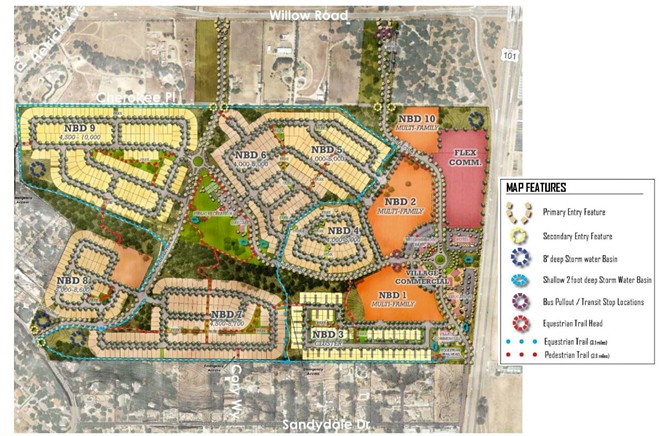The Dana Reserve development in Nipomo is one of the largest proposed developments in the history of San Luis Obispo County. Last January, we noted the local media’s failure to accurately report on the massive project and its equally massive impacts on the environment (“Local journalists overlooked an important document for Nipomo’s Dana Reserve development,” Jan. 19).
An alternative project design had recently been dismissed, one that would have avoided the destruction of a large coastal oak woodland and rare native chaparral; reduce the project’s greenhouse gas emissions and other air pollutants, along with excessive vehicle miles traveled and unplanned population growth; and avoid adding to the local jobs/housing imbalance. It also would have brought the project into compliance with dozens of land use policies in the county’s general plan and avoided multiple violations of the land use ordinance—all significant improvements on the project as proposed.
The good news: Since then, a draft environmental impact report (EIR) has been issued containing two other project alternatives—Alternative 2 and Alternative 4—that would make those same beneficial changes in slightly different ways.
The bad news: When those alternatives come before the SLO County Planning Commission for deliberation, planned for Oct. 23 and 24, the commission may decide to reject them because they fail to meet “project goals” such as “provide a mix of housing types.”
All the project alternatives provide a mix of housing types, just in different proportions. That objection is a thinly veiled pitch for fewer multifamily units and more high-dollar single family residences—a housing type, can we all agree, that is not scarce in San Luis Obispo County.
The notion has been floated that recent amendments to the state’s housing laws virtually compel the county to approve the project as proposed, with no modifications or conditions, due to Sacramento’s interest in alleviating the affordable housing crisis and overriding all other considerations to get such housing built.
The state of California defines “affordable housing” as affordable to people with very low-, low-, and moderate incomes. Projects claiming to do so must ensure either that at least 20 percent of the total units of a project will be sold or rented to lower income households, or 100 percent of the units will be sold or rented to persons and families of moderate/middle income.
Out of the 1,318 residential units in the Dana Reserve project as proposed, 8 percent—not 20 percent—can be classified as affordable to low- and very low-income households. Moderate income and middle units equate to 37 percent—not 100 percent—of the project’s units. The Dana Reserve does not meet the definition of affordability for very low-, low-, or moderate-income households. Even if it did, the state’s requirements for approval of such projects apply only to “a housing development project that complies with the objective standards of the general plan and zoning ordinance.” As is abundantly clear in the EIR, this project does not meet that standard. Only an alternative project that largely eliminates the project’s general plan conflicts would meet the requirements of the state’s Housing Crisis Act, Permit Streamlining Act, and Housing Accountability Act.
Bad news, part 2: The two best project alternatives are long on general statements of avoided environmental impacts and short on specifics. None of the project alternatives in the final EIR include site plans or concept maps to illustrate the changes proposed and locations of the various mixes of housing, open space, and quantities of avoided destruction of oaks.
That means the SLO County Planning Commission will be flying blind as it deliberates on the project and project alternatives. Which means it would need to ask staff to work on producing such specifics and bring them back to a future meeting for a vote. The Planning Commission is more likely to issue a permit for the project as proposed.
Denying the permit, thereby triggering an inevitable appeal to the Board of Supervisors, would allow the applicant and the groups working on this project to take that time to create an alternative combining the best of the two EIR alternatives and make the sure the supervisors have a visual of exactly what that would look like.
Andrew Christie is the executive director of the Santa Lucia Chapter of the Sierra Club. Write a response for publication by emailing it to [email protected].








